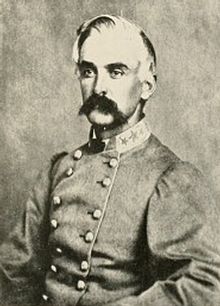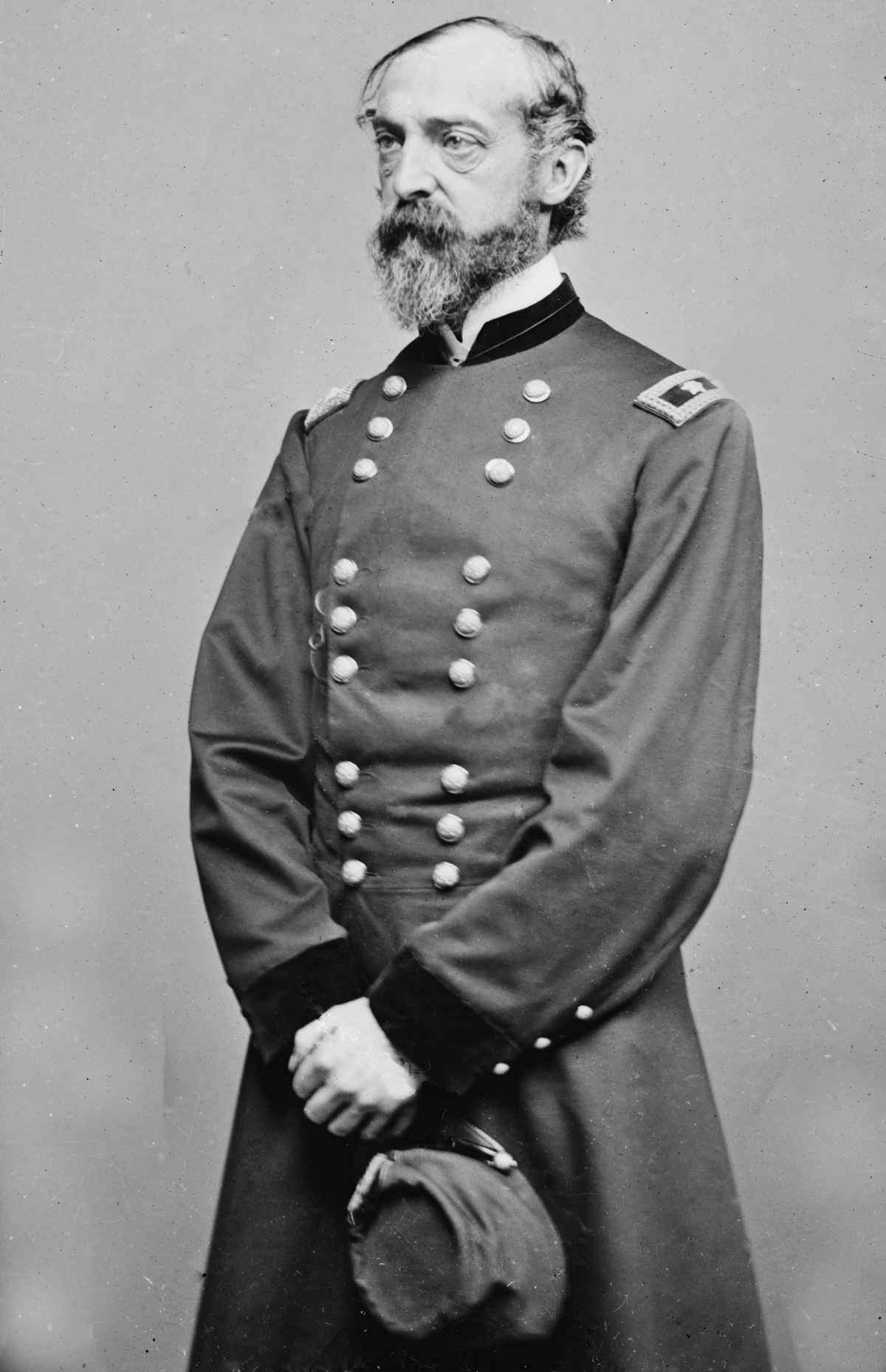The Gettysburg Campaign: Cavalry Actions in the Loudoun Valley
The coming week will commemorate the 154th anniversary of the cavalry battles of Aldie, Middleburg, Upperville, all part of the Gettysburg campaign. These fights were particularly important as they were a series of engagements that kept the Federal cavalry from getting a look into the Valley and discover Lee’s intent and movements; a secret Lee hoped to keep Hooker in the dark about for as long as possible. For a brief overview of the these actions, June 17-21, 1863, keep reading below. Also, be on the look out for tomorrow’s ECW Weekender where my co-author of The Last Road North: A Guide to the Gettysburg Campaign, 1863 will take you to all of these famous battlefields and other off-the-beaten path locations in the Loudoun Valley.

With the Federal infantry still advancing to the north on June 17, the Federal cavalry was heading west in search of the movements and intentions of the Confederate army. Ultimately this road took them towards Aldie Gap in the Bull Run Mountains. Leading the cavalry that day was Gregg’s command. Upon arriving in Aldie proper, orders were sent out to the riders to perform a thorough sweep of the countryside in search of Confederate troopers or signs of their recent departure. Gregg’s command, with Pleasonton in tow, reached Aldie around 4:00 p.m. Arriving at nearly the same time was Brig. Gen. Fitz Lee’s brigade of Confederate cavalry under the temporary command of Col. Thomas Munford. The Confederate cavalry were wholly outnumbered, yet Gregg sent his units into the fight piecemeal. Because of this, Munford’s men, with the assistance of natural terrain features acting as force multipliers, were able to bloodily repulse each attack by the Federals. After several hours of combat, Munford pulled his men back through Aldie Gap to the town of Middleburg. Reports of the sharp engagement by Pleasonton and Gregg noted a decisive Federal victory, yet that was hardly the case. Munford in his report of the battle on August 7, 1863 noted “In this engagement, we captured 1 colonel, 3 captains, 5 lieutenants, and 129 non-commissioned officers and privates, with their horses, and arms, representing seven regiments.”[i]
Shortly before the events at Aldie, Pleasonton had ordered Gregg to detach a unit and send them to Middleburg. Gregg detached Col. Alfred Duffié’s 1st Rhode Island Cavalry. The unit, 275 strong, headed south to Middleburg by way of Thoroughfare Gap. Once there, he was to get in immediate contact with Gregg. When Duffié reached Middleburg he drove out Stuart’s rearguard. After accomplishing this, Munford’s men who had been pulling back from Aldie began to concentrate around the 1st Rhode Island in Middleburg. Duffié quickly dismounted many of his troopers, placed them behind strong stonewalls and barricades and sent a dispatch to headquarters looking for support. None came. After holding Middleburg for several hours, Duffié pulled his men out and camped for the remainder of the evening across the Little River. This was only the beginning of this regiment’s plight.
Stuart’s cavalry were also busy on June 18. After the events at Aldie the previous afternoon, Stuart concentrated his command at the critical mountain passes through the Bull Run Mountains at Aldie, Hopewell, and Thoroughfare. At the same time the various units of Stuart’s command were protecting these passes from the prying eyes of Union cavalry, they were also in supporting distance of Snicker’s Gap and Ashby’s Gap through the Blue Ridge Mountains and into the Valley. Back at Aldie, Pleasonton readied the Federal cavalry for further movements westward through the gaps to “find out what was behind them.”[ii] Pleasonton ordered several of his brigades through the Bull Run Mountains on two roads leading towards Ashby’s and Snicker’s Gaps. Skirmishing between the Union and Confederate cavalry went unabated throughout June 18 as Col. Thomas Devin’s Federal brigade rode through Thoroughfare Gap, Col. William Gamble’s brigade moved toward Snicker’s Gap, and Maj. Irvin Gregg’s brigade pushed towards and through Middleburg. Despite pushing farther westward, none of the skirmishes had been decidedly poignant for the Federal cavalry. By the end of June 18 only Colonel Gregg’s command had laid any serious to roots down to their westward advance occupying the barricades in Middleburg that Duffié had previously constructed.

On June 19, the Fifth Corps, ably commanded by Maj. Gen. George G. Meade, headed westward towards Aldie to support Pleasonton’s cavalry, and not far away the Third Corps moved into position near Gum Springs. Federal cavalry were also on the move. The order of march for Gregg’s cavalry division was to proceed westward down the Ashby Gap road, through Middleburg, and end at Upperville. Fighting at Middleburg between Gregg’s troopers and Col. John R. Chambliss’ Confederate cavalry brigade, slowed the Union advance. The fighting, at times severe, prevented Federal troopers from reaching their destination at Upperville. Once again the Confederate cavalry had performed well enough to hold the passes and protect the movements of Lee’s army. These passes were not protected solely by Confederate cavalry, however. Longstreet’s First Corps had been on the march on June 19 and had helped Stuart’s cavalry secure the gaps in the Blue Ridge Mountains. Further south, Hill’s Corps continued to bring up the rear of the Army of the Northern Virginia and entered into the Shenandoah Valley. The Second Corps, first to cross the Potomac River, largely remained in camp while some of its last brigades crossed into Maryland and moved towards Hagerstown and Funkstown. For these men, June 20 passed in quite the same fashion, yet still other elements of the Confederate army continued to march.
Hill’s Corps still plodded down the Valley while the First Corps concentrated its scattered command following its assistance to Stuart in the mountain passes during the previous day. Stuart also worked on the placement of his troopers during June 20. To replace the First Corps infantry at Snicker’s Gap in the Blue Ridge Mountains, Stuart sent one cavalry brigade to that position under the command of Munford. The remainder of his command was dispatched to Upperville and Ashby’s Gap where Stuart felt further Union attempts might be made. Three other Confederate cavalry brigades were sent north of Middleburg to Union, Virginia.
Back at headquarters for the Union cavalry in Aldie, on June 20, Pleasonton wrote Hooker of the previous days’ fight. “I am just in from General Gregg’s battle-field of yesterday. He had a very hard fight, and lost 5 officers killed and 1 wounded, besides some 75 men killed and wounded, but drove the enemy most gallantly from a very strong and difficult position…,” wrote Pleasonton.[iii] Following his accounting of the fight at Middleburg, Pleasonton proposed to Hooker a tactical plan to quiet the threat from Stuart during the rest of the campaign. “I would, therefore, respectfully request that the general commanding permit me to take my whole corps to-morrow morning, and throw it at once upon Stuart’s whole force, and cripple it up,” suggested Pleasonton, while “At the same, to do this effectually, I should like to have a couple of large brigades or a division of infantry, to move out at…and engage the dismounted sharpshooters with Stuart while the cavalry attacks and puts to flight their horses.” Pleasonton had high hopes for his plan. “I believe that this properly managed, can be done, and it would seriously impair the enemy’s force for offensive operations.”[iv] Five hours later, at 5:20 p.m. Maj. Gen. Daniel Butterfield, Chief of Staff for the Army of the Potomac wired back to Pleasonton, “…the major-general commanding, who authorizes you, in accordance with your request, to move to-morrow morning with entire corps against the enemy’s cavalry. Major-General Meade will be instructed to detach two brigades of infantry…to support this movement.” Although Hooker looked for Stuart’s cavalry to be “crippled” from the attack, he also laid before Pleasonton orders to “ascertain…where the main body of the enemy’s infantry are to be found at the present time, especially A.P. Hill’s corps.”[v] June 21, 1863 was destined to be a busy day for Union and Confederate cavalry.

On June 21, Pleasonton gathered his cavalry and borrowed infantry from the Fifth Corps. In all, he had nearly 12,000 men to precipitate an attack on the Confederate cavalry now near Upperville. Pleasonton used Gregg’s division and a Fifth Corps infantry brigade under the command of Col. Strong Vincent to push forward to Upperville creating a feint along the Confederate front while Buford’s division struck out north to attack Stuart’s left flank and rear. At 3:00 p.m. yet another cavalry engagement began. It was the latest in a series of attacks and skirmishes by both sides over the past several days. Gregg’s division had made contact with elements of Brig. Gens. Wade Hampton and Beverly Robertson’s troopers. The Confederates slowly withdrew through the town of Upperville per Stuart’s orders in front of the Union advance. The tempo of the fighting increased as Gregg’s command attacked into the rear of Robertson’s command during its retreat. Hampton immediately came to the aid of Robertson’s troopers driving Gregg’s attacking column out of the town of Upperville through a fierce counterattack. More units were fed into the fight by Gregg forcing Hampton’s men to give ground yet again. Not to be outdone, Hampton ordered yet another counterattack against the Federals and again was successful in his efforts. Fighting between the two sides soon broke off and, seeing Vincent’s brigade approaching, Hampton and Robertson’s commands retreated westward toward Ashby’s Gap.
While fighting raged at Upperville, Buford’s command was still in search of Stuart’s left flank. This portion of the day’s plan failed from the start. Buford’s forward movement began two hours late. Once on the road both horses and men began to breakdown from the constant skirmishing and marching during the previous week. As Buford reached what he was told was Stuart’s weakened left flank, instead he discovered Brig. Gen. William E. Jones’ brigade. Firing amongst the two adversaries began soon after. Buford’s troopers pushed hard against the Virginians in Jones’ brigade as the Confederates slowly retired towards Upperville. Once there, Jones’ brigade linked up with Col. John R. Chambliss, Jr.’s troopers and deployed for further actions against Buford. Once organized, Jones ordered an attack but failed in the endeavor. The two Confederate commands, defeated, retreated towards Ashby’s Gap as well. Buford, following close behind approached the retreating column near the Gap itself and was able to determine that Confederate infantry was indeed beyond the Gap and operating in the immediate area. This action was to be the last for the Union cavalry on June 21. Pleasonton broke off the attack and pursuit, “Being satisfied I had accomplished all that the expedition designed….”[vi]
Despite the exaggerated results that Pleasonton claimed in his report to Hooker the following day, on June 21 Union forces probing for Lee’s intentions and lines of march forced Confederate movements to a halt; so much so that Lee ordered an entire Confederate division to countermarch to Ashby’s Gap to hold it. The weeks’ worth of cavalry actions had other merits for the Federal army and high command as well. As Gettysburg Campaign historian Edwin Coddington noted, “The Federal cavalry had again demonstrated its ability to stand up against its old adversary and give a good account of itself,” while at the same time and “At considerable cost…it had finally secured some reasonably accurate facts about Lee….”[vii]
On the night of June 21, a week’s worth of fighting, fatigued mounts, low supplies, and high casualties marked both sides. The battles at Aldie, Middleburg, and Upperville cost Stuart’s troopers nearly 600 men in casualties, while Pleasonton’s riders lost even more, more than 900 men in all.
[i] OR, pt. 1, 913.
[ii] Coddington, 79-80.
[iii] OR, pt. 1, 911.
[iv] OR, pt. 1, 911.
[v] OR, pt. 3, 227-228.
[vi] OR, pt. 2, 741.
[vii] OR., pt. 1, 50.
1 Response to The Gettysburg Campaign: Cavalry Actions in the Loudoun Valley